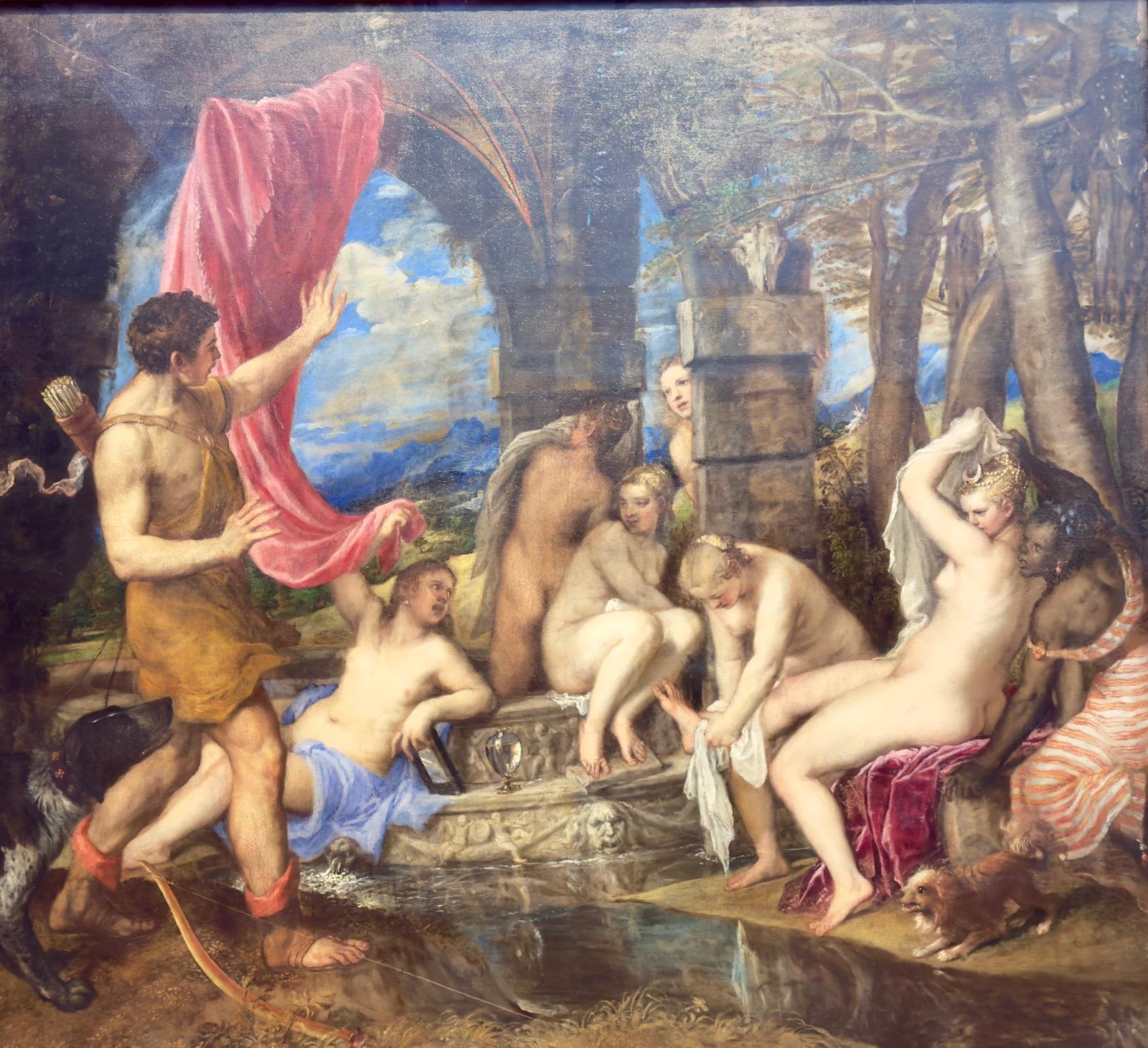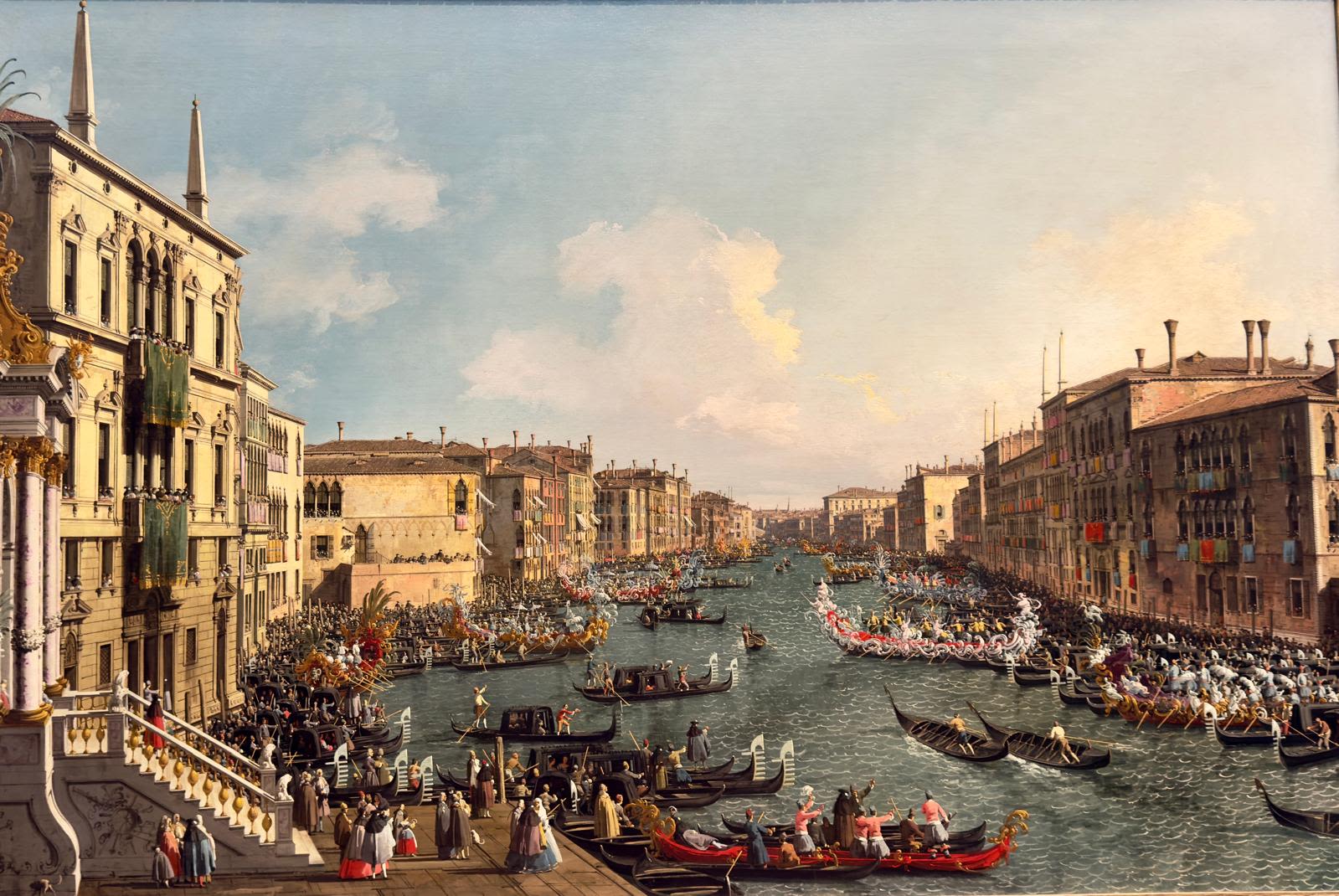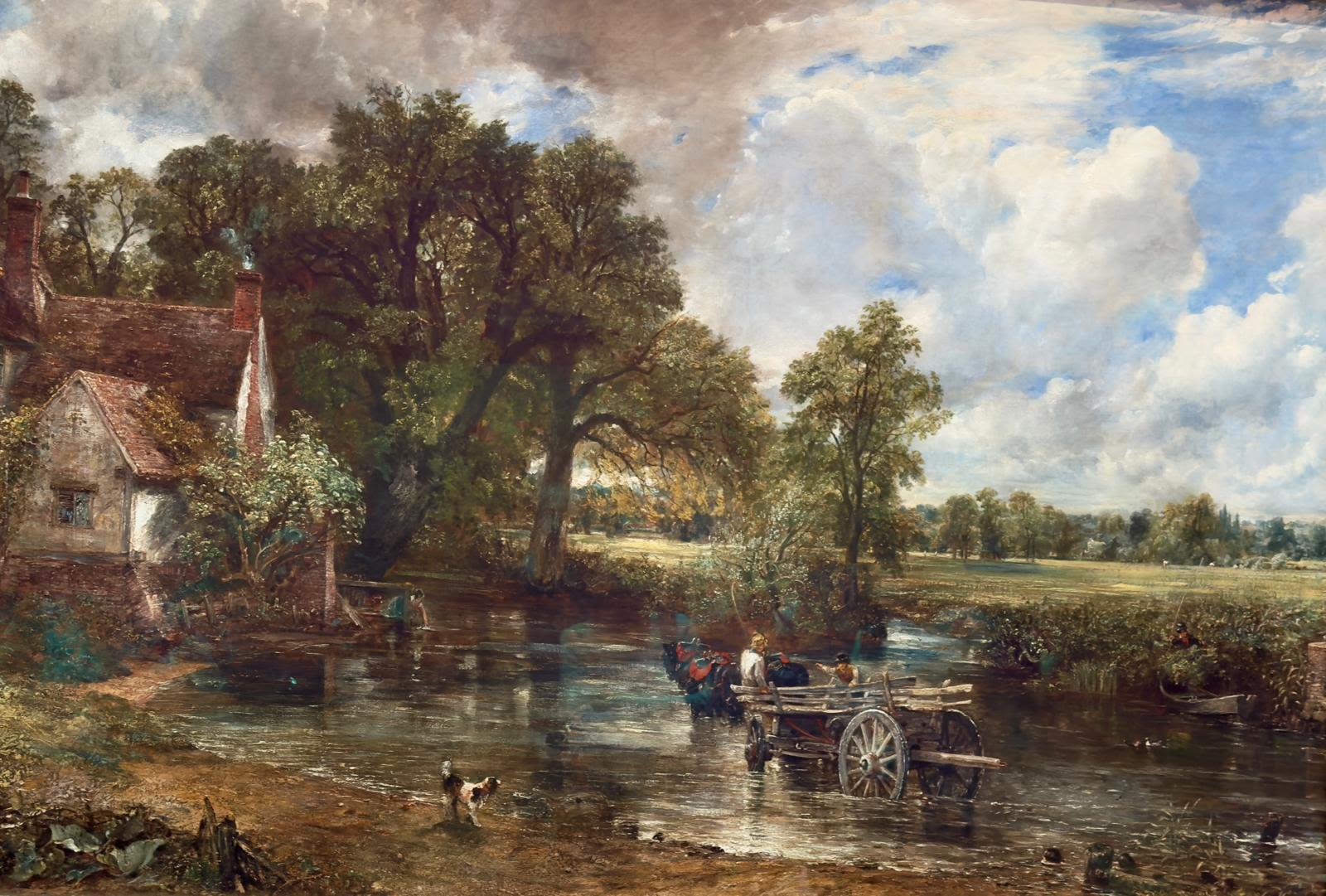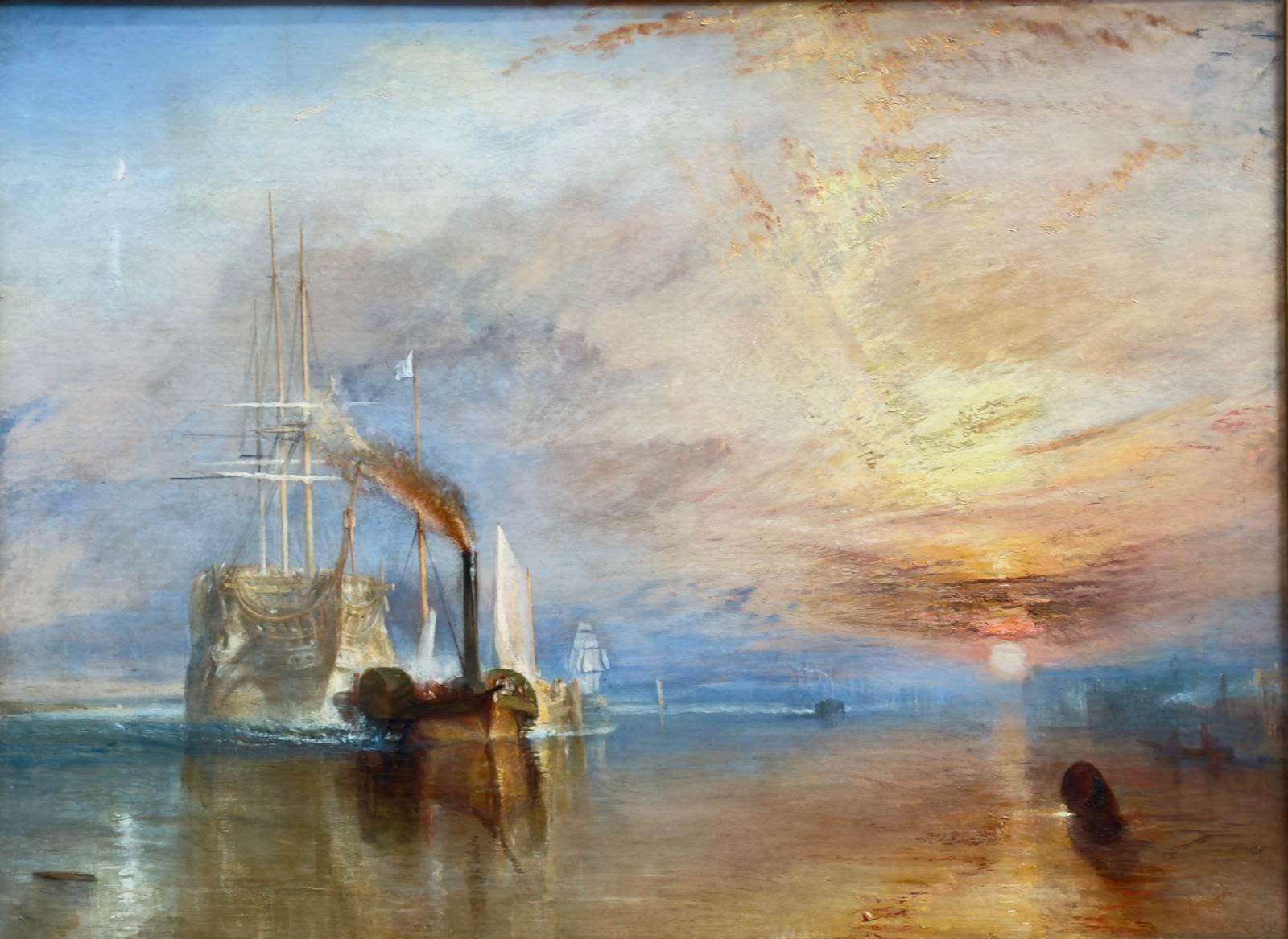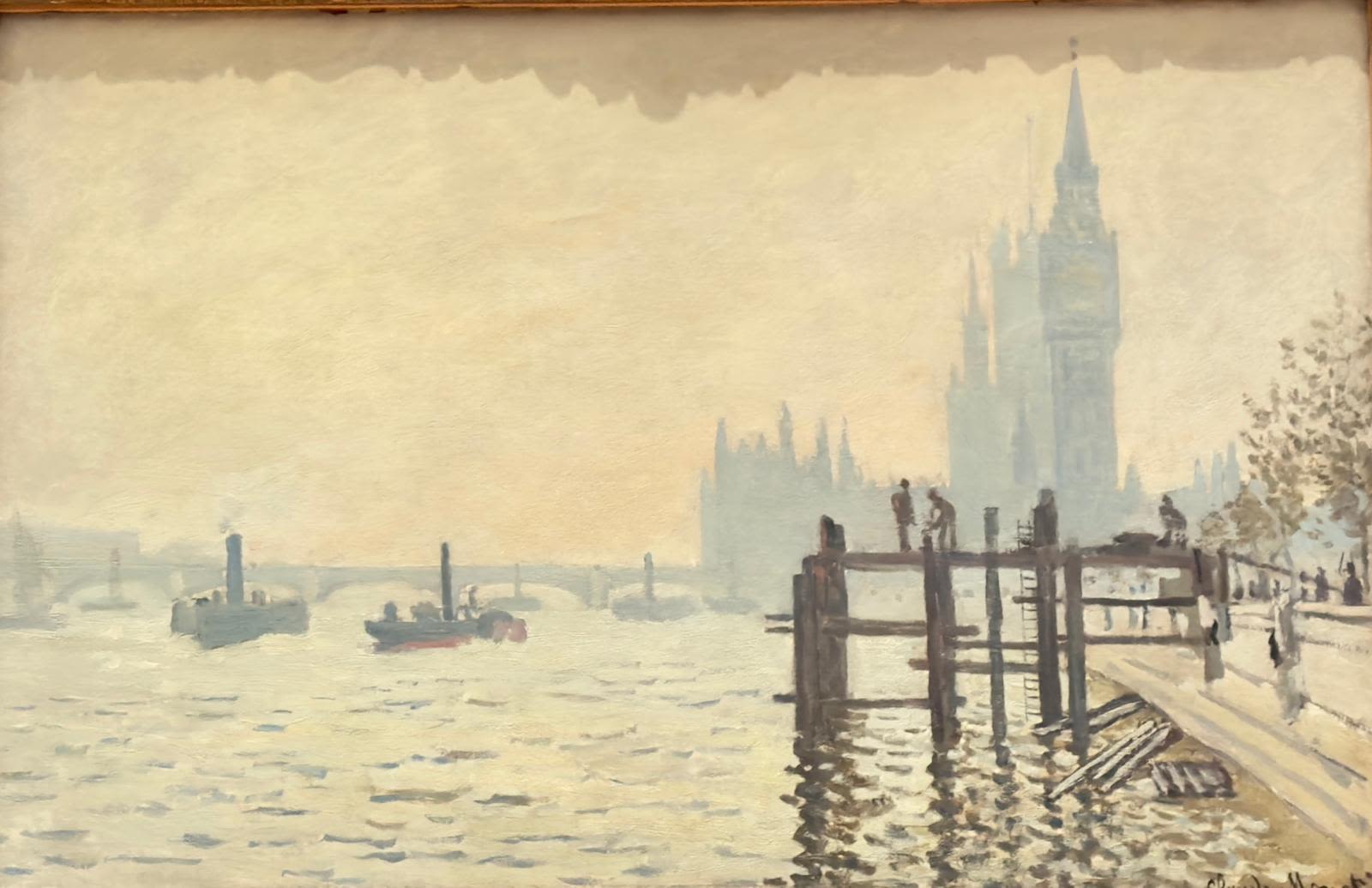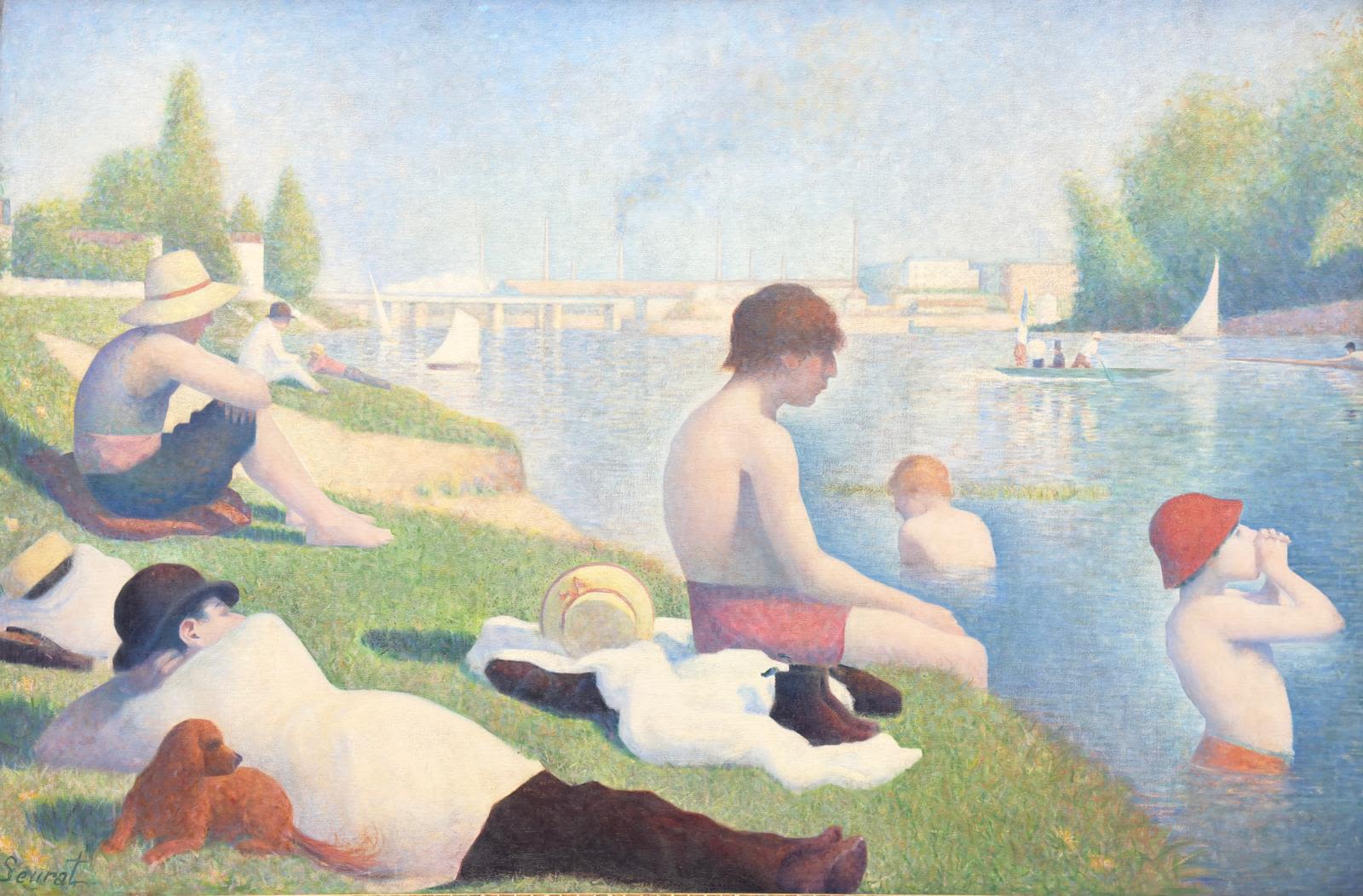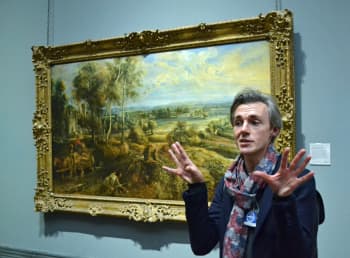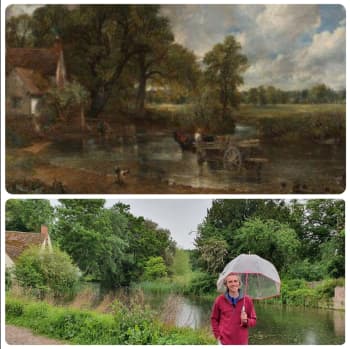Sixty minutes in The National Gallery
An analysis of the importance of water reflected by seven artists from the
Renaissance to Impressionism
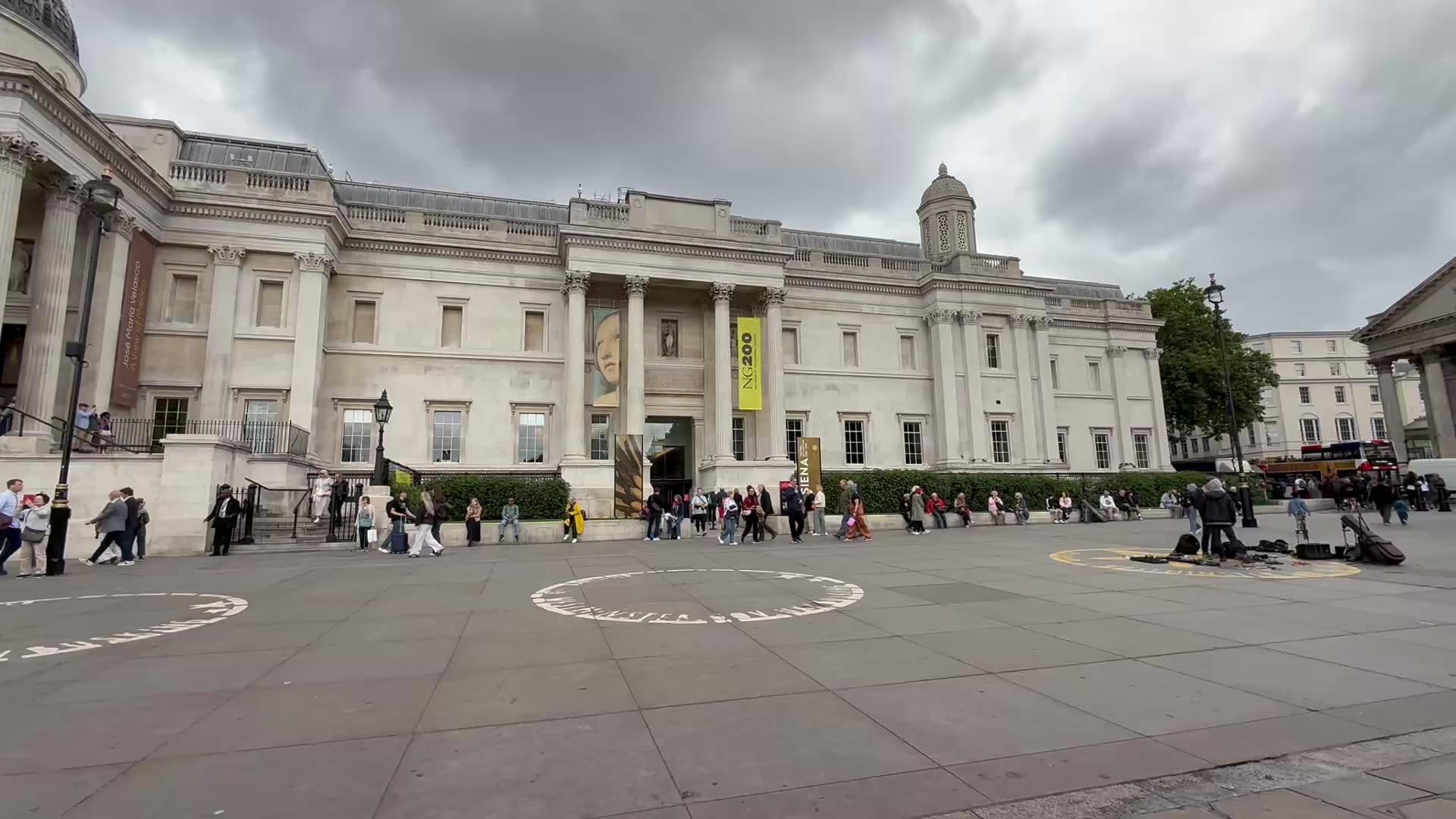
Water has no shape, yet artists have been shaping it for centuries allowing us to learn about how they represent history.
The Sainsbury Wing at the National Gallery reopened to the public on May 10, 2025, redisplaying its collection featuring rooms dedicated to individual artists including Titian (active about 1506‒1576), Rembrandt (1606‒1669) and Monet (1840‒ 1926).
New Room Arrangement at the National Gallery
Following a £85 million refurbishment and rehang, the National Gallery now presents its collection through a mix of chronological, national, and thematic groupings.
Visitors can start with early Renaissance works in the Sainsbury Wing and continue through newly curated spaces combining Italian, Dutch, French, and British art.
Some galleries highlight themes like gold in medieval art or full-length portrait traditions. The new layout aims to spark fresh visual connections across time and style.
Exploring the gallery’s European collection from the Renaissance to Impressionism, visitors can see how artists have used water as a feature rather than just scenery.
Each canvas captures more than a moment; it reveals how people imagined gods, celebrated rituals, worked the land, or coped with industrialised changes.
Together, they show how water has flowed not only through nature, but also through the artistic imagination—shaping history one brushstroke at a time.
Christine Riding, Director of Collections and Research, said: “This has been a once in lifetime opportunity to redisplay one of the greatest art collections anywhere in the world.
“We have thought very carefully about the journey, from gallery to gallery, as our visitors explore the often-surprising connections between artists, across time and place. We hope it will joy to visitors both new and old.”
Visitors short on time can explore how European artists from the Renaissance to Impressionism used water not just as background scenery, but as a key feature in storytelling and composition across five centuries.
Each canvas captures more tha n a moment. It reveals how people imagined gods, celebrated rituals, worked the land, or coped with industrialised changes.
Together, they show how water has flowed not only through nature, but also through the artistic imagination—shaping history one brushstroke at a time.
These seven famous artists have used water in different ways to tell us about how people were living and thinking over the centuries.
Diana and Actaeon, Titian – 1556-9
Titian was a Venetian master known for rich colour and dramatic use of light.
The Renaissance was roughly 1300–1600 and marked a profound shift in European artistic production, focusing on humanism, realism, and the revival of classical antiquity.
While many works depicted biblical subjects, there was also a growing interest in mythology, portraiture, and everyday life.
In Diana and Actaeon, the great Renaissance painter Titian uses water as a sacred setting where the goddess of the hunt, Diana, bathes with her nymphs. The water forms part of a sacred space, marking the boundary between the human and the divine.
This private moment is abruptly interrupted when the hunter Actaeon stumbles upon the scene. Realizing he has intruded upon a divine ritual, he understands immediately that his fate is sealed. Diana will turn him into a stag who will be eaten by his own hounds.
Muriel Carré, Art Historian and Blue Badge Guide
Muriel Carré, Art Historian and Blue Badge Guide
Photo credit: Kitt Garrett, The National Gallery, Titian
Photo credit: Kitt Garrett, The National Gallery, Titian
The Mill, Claude Lorrain (c. 1600–1682)
Claude represents the Baroque period. His distinctive style blended classical balance with atmospheric naturalism.
His work represents a pastoral, idealized form where he mastered the technique of atmospheric or aerial perspective, using soft transitions of light and colour to create depth with distant objects which fade into a bluish haze, mimicking how the eye perceives distance.
Claude often structured his paintings with balanced symmetry, influenced by Greco-Roman ideals with architectural elements such as temples, ruins, columns and framing trees to guide the viewer’s eye.
His landscapes were bathed in a warm, golden tonality, often suggesting idealized or Biblical serenity.
Unlike many Baroque artists who focused on figures, Claude made landscape the main subject, with mythological or biblical scenes often reduced in scale.
He helped elevate landscape painting from background scenery to a genre of serious artistic ambition, influencing Turner, Constable, and the Romantics.
Wealthy British landowners asked Lancelot "Capability" Brown to use Claude’s paintings as inspiration for their own garden designs incorporating sweeping lawns, serpentine lakes, and classical architecture.
In The Mill , by Claude, an inscription on the tree stump at the centre identifies the scene as the marriage of Isaac and Rebecca, as described in the Book of Genesis.
The couple dances to tambourines, surrounded by figures relaxing and taking part in the celebration.
The expansive water and flat landscape are imaginary but draw inspiration from the Roman countryside, where Claude spent much of his life.
Characteristic of Claude’s style, the composition includes a mill and a distant town beneath a naturalistic sky.
The tower, also a common motif in his work, here references the emblem of the painting’s original owner, the duc de Bouillon (1605–1652).
Photo credit: Kitt Garrett, The National Gallery, Claude
Photo credit: Kitt Garrett, The National Gallery, Claude
A Regatta on the Grand Canal – Canaletto- 1740
The Venetian Vedutista period started in Vencie around late 1600’s and peaked in 1700s.
People were traveling more and highly detailed, panoramic views of cities, often focusing on canals, architecture and landmarks were popular souvenirs for aristocrats and wealthy travelers on their Grand Tour.
Today, people send postcards as reminders of where they have travelled, or simply take a snapshot and post it on social media.
Venice and water are inseparable. Canaletto’s detailed view of a Venetian boat race offers a slice of 18th-century life, with shimmering reflections and festive sails gliding across the water.
Boats move along the canal, and crowds observe from buildings and platforms. The painting shows excited people lining the canal in preparation for the race.
Canals are central to the city’s structure and this postcard type of image was very popular.
Today, many visitors take photos along the Thames showing how active the waterway is today.
Muriel Carré, Art Historian and Blue Badge Guide
Muriel Carré, Art Historian and Blue Badge Guide
Photo credit: Kitt Garrett, The National Gallery, Canaletto
Photo credit: Kitt Garrett, The National Gallery, Canaletto
The Hay Wain, Constable, 1821
John Constable (1776–1837) is one of the most important figures in Romantic landscape painting. His work reflects the ideals of Romanticism—a movement that emphasized emotion, nature, and the sublime—while also rooted in a deep love for the English countryside, especially his native Suffolk.
He said: “Painting is but another word for feeling.”
He wanted people to have an emotional connection to nature and painted places he knew intimately. His family owned a mill on the River Stour, and his painting The Hay Wain is his most famous.
He pioneered the use of "skying"—carefully observing and painting skies to reflect mood and weather with emphasis on clouds for texture and movement.
His brushwork was often loose and expressive, compared to his predecessors more polished academic styles and gave his paintings an emotional energy.
Rather than idealized landscapes, Constable focused on working farms, river barges, mills, and fields, depicting the lives of rural workers capturing the beauty in the ordinary.
His work carries a subtle commentary on the encroachment of industrialization around London.
In The Hay Wain, Constable shows a cart moving through shallow water in a rural stream. The water reflects trees and sky, linking land and weather. The work presents water as part of a working landscape. A woman collects water from the river near the mill.
Dr. Emily Burns, Vivmar Curatorial Fellow at The National Gallery describes The Hay Wain below.
Dr. Emily Burns, Vivmar Curatorial Fellow at The National Gallery describes The Hay Wain.
Photo credit: Kitt Garrett, The National Gallery, Constable
Photo credit: Kitt Garrett, The National Gallery, Constable
The Fighting Temeraire – J.M.W. Turner -1839
J.M.W. Turner (1775–1851), one of Britain’s most celebrated painters, transformed landscape art through his dramatic use of light, colour, and emotion.
Known for his powerful seascapes and sweeping skies, Turner captured the raw energy of nature during the Romantic period.
Using loose brushwork and vivid colour, he depicted atmosphere and movement.
His style became more abstract, foreshadowing Impressionism decades before it officially emerged. His use of water and light were stunning.
In The Fighting Temeraire by Turner, a sailing ship is towed by a steam-powered tugboat along the River Thames.
The water carries both vessels, marking a shift from sail to steam. The scene takes place at the end of the ship’s service along a calm river, but the symbolism of the storm shows the future of London’s industrial revolution.
An intersting note is that the scene is imaginary. Turner has painted the ship coming from the sea into the Thames from the East.
However, the sun sets in the west, so you can see how he has taken creative license here to emphasize the end of the ship's service with the end of the day as the sun sets.
Muriel Carré, Art Historian and Blue Badge Guide
Muriel Carré, Art Historian and Blue Badge Guide
Photo credit: Kitt Garrett, The National Gallery, Turner
Photo credit: Kitt Garrett, The National Gallery, Turner
The Thames Below Westminster, Monet, 1871
Claude Monet (1940 – 1926) was one of the most celebrated founders of French Impressionism.
He built his artistic legacy around two elements he loved most: light and water.
From the shimmering reflections of lily ponds in his Giverny garden to the hazy sun rises over the River Thames, Monet’s fascination with how light transformed water led him to revolutionise the way we see the natural world.
The Thames Below Westminster by Monet also focuses on the Thames.
Boats, poles, and fog suggest regular passage and weather conditions.
The water reflects the structures and captures the movement of light.
Westminster had just opened and Embankment was under construction.
It was another way for an artist to see the new London emerging as an industrial powerhouse.
The shimmer of water adds movement reinforcing this change into the future.
Muriel Carré, Art Historian and London Blue Badge Guide
Muriel Carré, Art Historian and London Blue Badge Guide
Photo credit: Kitt Garrett, The National Gallery, Monet
Photo credit: Kitt Garrett, The National Gallery, Monet
Bathers at Asnières – Georges Seurat -1884
Georges Seurat (1859–1891), a French Post-Impressionist painter, is best known for pioneering Pointillism—a meticulous painting technique that used tiny dots of pure colour to build up an image.
While his style appears very different from that of Claude Monet or the Impressionists, Seurat also had a deep interest in light and water, though he approached it with scientific precision rather than emotional spontaneity.
While Monet chased the ever-changing dance of light on water, Seurat froze it in time, breaking it down into tiny elements of colour and light.
His structured, scientific approach brought a different kind of radiance to scenes of rivers, bathers, and boats—making him a master of capturing light and water through precision rather than passion.
In this Pointillist masterpiece, the Seine becomes a modern leisure space. The water shimmers through dots of pure colour, giving the scene both realism and rhythm.
It's a Sunday afternoon. The water separates the factory workers relaxing in the sunshine by the Seine River from the industrial background.
It functions as both a border and a link between leisure and labour.
A small boat in the river has a middle class man wearing a top hat to reinforce the difference between the working classes.
On the right bank, look closely and you will see the location where the Seurat’s famous “Sunday in the Park with George” is situated. That painting is in the Museum of Fine Arts in Chicago.
Muriel Carré, Art Historian and London Blue Badge Guide
Muriel Carré, Art Historian and London Blue Badge Guide
Photo credit: Kitt Garrett, The National Gallery, Seurat
Photo credit: Kitt Garrett, The National Gallery, Seurat
A survey conducted outside The National Gallery, people were shown photos of the seven paintings and asked to name their favourite. The results are in the chart below.
Simon Whitehouse, Arts Society lecturer and freelance Blue Badge Tourist guide said:
“I’ve been lecturing on the subject of the 200th anniversary of the National Gallery and I’m always delighted when people find new ways of immersing themselves in the collection.
“Looking at Kitt’s wonderfully curated tour on a very hot day, I initially literally want to immerse myself into the inviting pools, canals and rivers.
“And then I thought well, Titian’s and Claude’s calm pools do look inviting but I’m less sure about the River Seine and the Thames in the 1800s!"
He highlighted the way hidden themes in artworks can make us think about other things, not just art.
He continued: “Turner’s 1838 view of the river reminds us of the fact that the River Thames was still very much a working river with steamships and coal barges and tugboats and lots of very unpleasant things floating in it.
“Just six years earlier, in 1832, cholera first arrived in London and the cause, which wasn’t understood then.
“It was from drinking infected water which came directly from the river!
“And then, in 1871 Monet captures that snapshot moment, when the Embankment had just been newly constructed, to house these revolutionary modern sewers.
“It meant now that waste was no longer going into the river, it so much cleaner, and people no longer died from infected drinking water!
“So, I love how a simple theme like water can really get you thinking and unleash a whole world of stories."
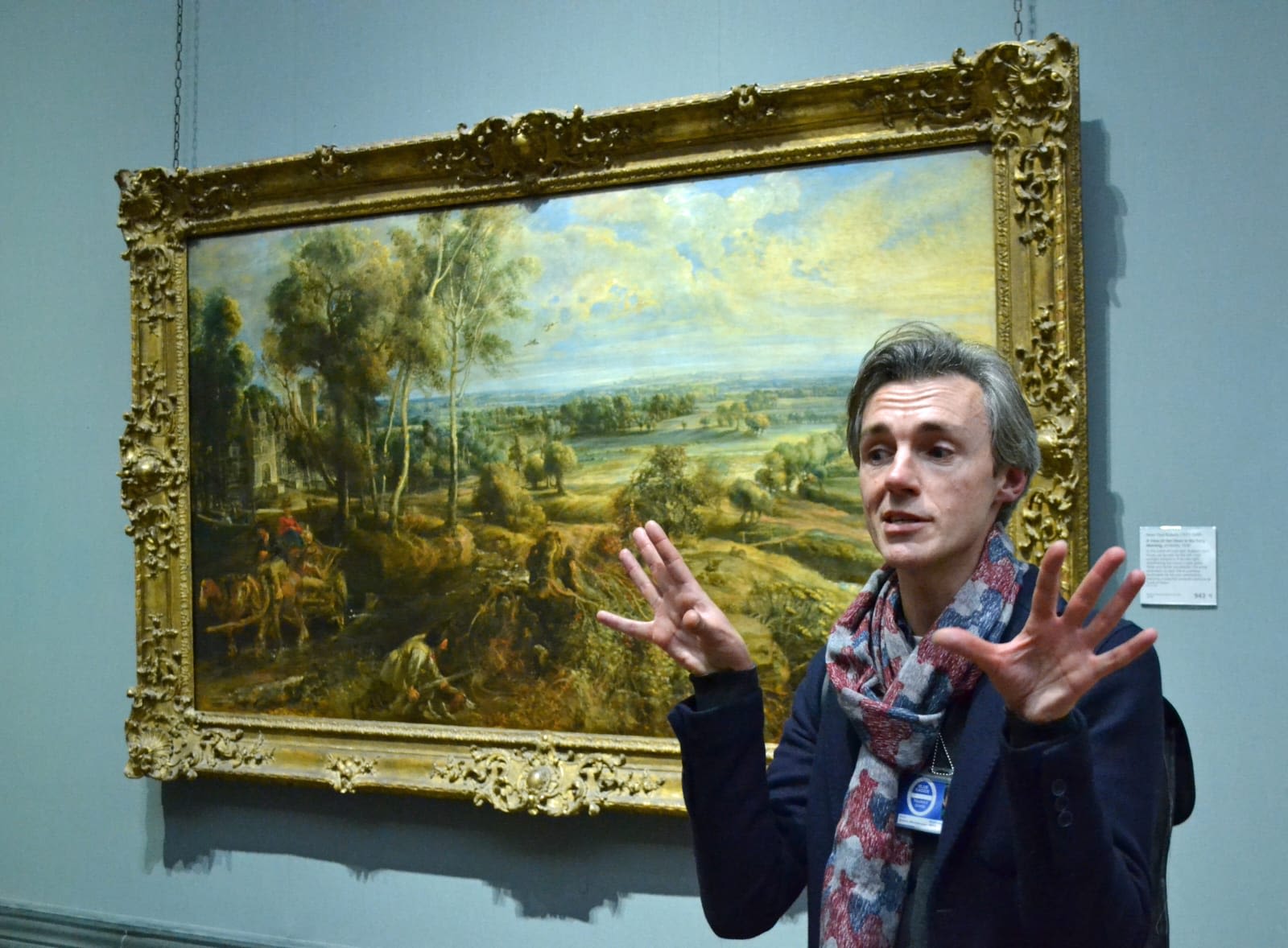
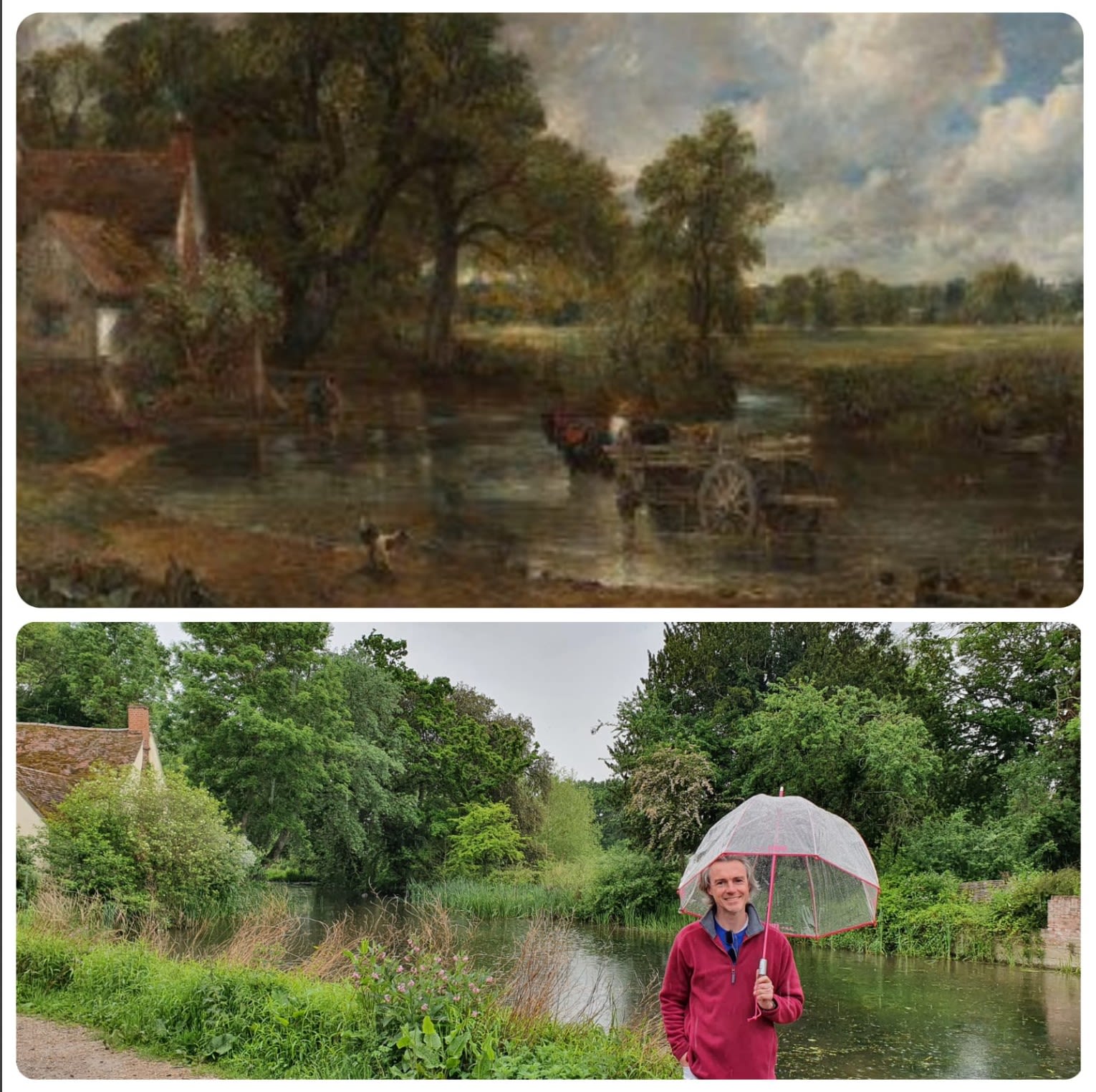
Click the link below to vote for your favourite painting in The National Gallery is your favourite.

